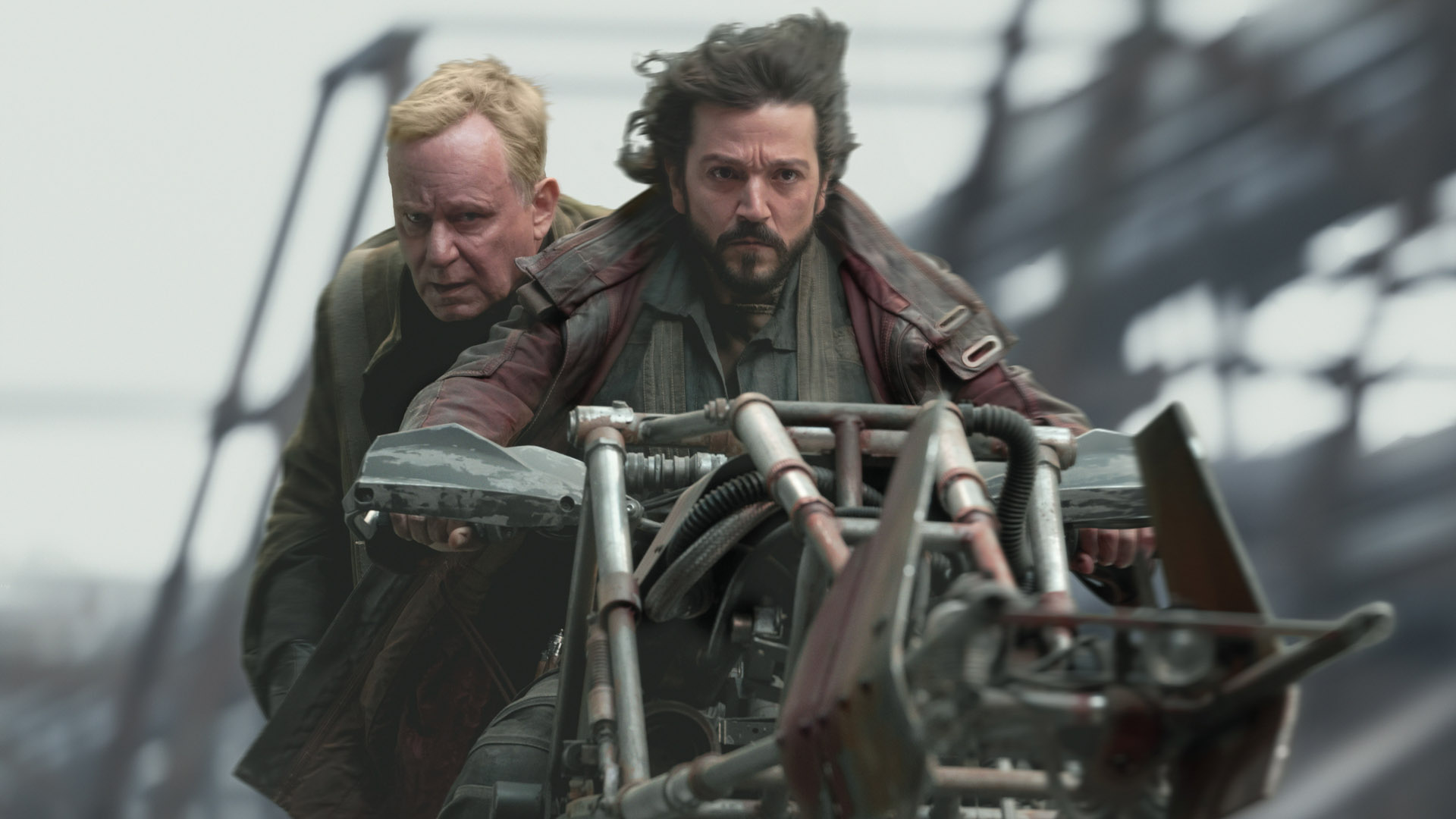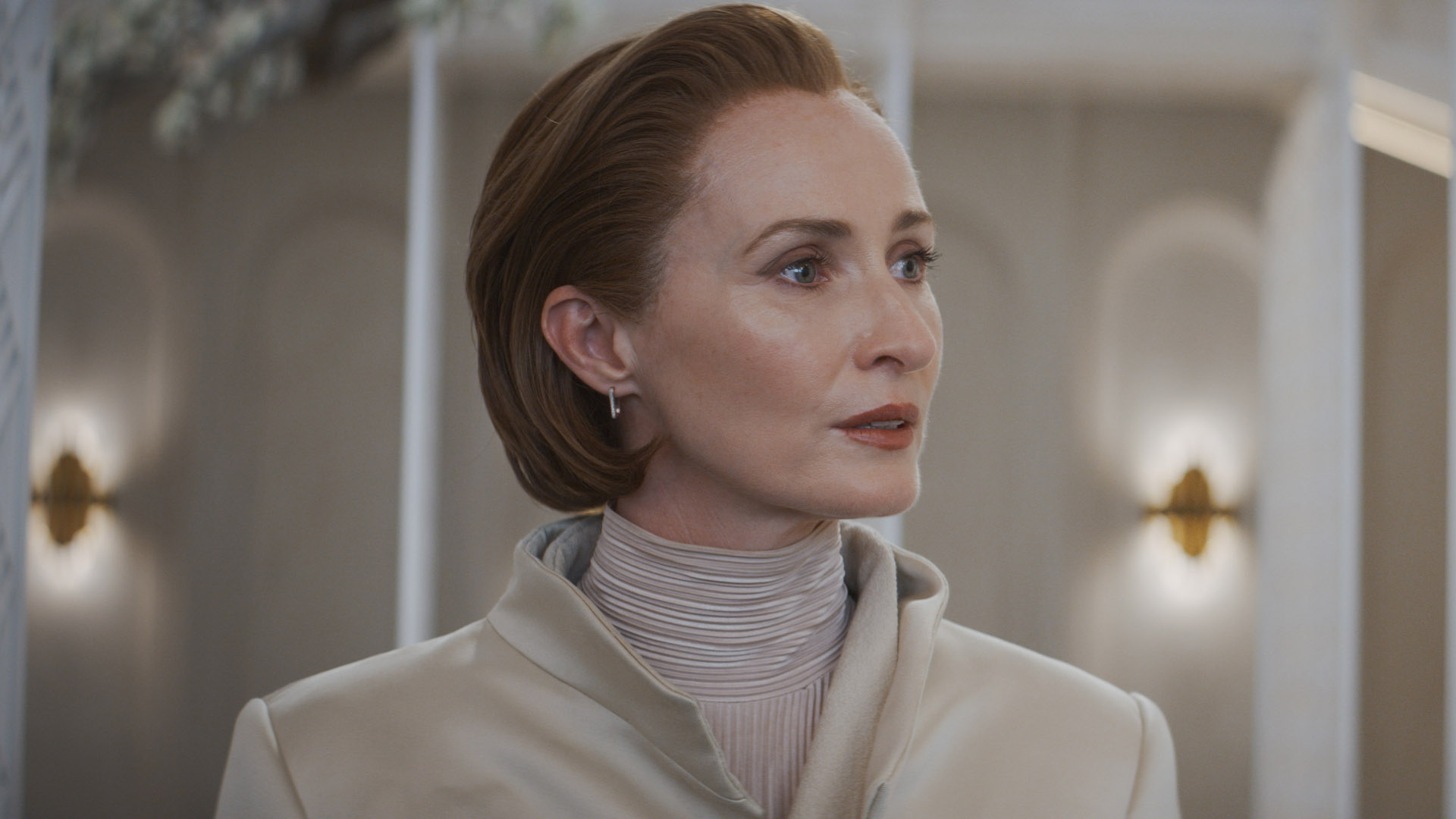There are approximately 100 billion stars in our galaxy. Seeing as there’s enough sentient lifeforms in Star Wars to fill several million space cruisers, it’s probably safe to assume similar numbers exist in Luke Skywalker’s corner of the universe.
So, if we play the numbers game, it’s increasingly implausible that every Star Wars story told on screen so far has been confined to a single 70-year time period – and even more ridiculous that a single family (the Skywalkers) has influenced so many of the pivotal moments in history.
Andor is different, however, and based on what we’ve seen so far, it’s the show that makes that galaxy far, far away feel a lot, lot bigger.
On paper, Disney Plus’s new Rogue One spin-off didn’t look particularly bold. After all, Lucasfilm’s ongoing mission to fill as many gaps in the Star Wars chronology as humanly possible means that prequels are as ubiquitous as Stormtroopers. Also, like Obi-Wan Kenobi and Solo, Andor (read our in-depth review) focuses on an established character’s exploits in that increasingly crowded section of the timeline between Revenge of the Sith and A New Hope. Nonetheless, Andor’s first four episodes transcend those shackles to become the most radical entry in Star Wars screen canon – and that’s a big deal for a 45-year-old franchise.
For all its wonderful qualities, Star Wars has traditionally been (small-c) conservative. The Force Awakens was successful largely because it followed the narrative beats of the original movie. Since then we’ve repeatedly seen that stepping away from an established formula can be far from popular, whether it’s original series fans becoming disillusioned with the prequel trilogy, or an extremely vocal minority telling the world how much they despise Rian Johnson’s wonderfully inventive The Last Jedi. (The resulting course “correction” of The Rise Of Skywalker is arguably the worst thing to happen to Star Wars in the Disney era.)
While the excellent The Mandalorian felt like a breath of fresh air, its lone gunslinger themes were a callback to the Western vibe of A New Hope – and, almost by stealth, it’s become the next chapter in the story of Luke Skywalker and the Jedi order. Even Star Wars: Visions – the anime series that gave filmmakers carte blanche to tell their own standalone stories – was strangely reluctant to venture too far beyond the idea of Jedi and lightsabers. The notion of what Star Wars is has become remarkably narrow, and many storytellers have been afraid to push at its edges.

Bourne again
In contrast, the fact that – blasters and the starships aside – Andor doesn’t feel like Star Wars at all is one of the best things about it. Showrunner Tony Gilroy (who joined Rogue One for reshoots and is widely credited with turning it into a classic) clearly didn’t receive any memos about sticking to any blueprint, and the results are utterly invigorating.
Cassian Andor himself is an intriguing choice of lead because we know so little about him, beyond the fact he’ll die on a picturesque Scarif beach at the end of Rogue One. Over the course of that film we saw him execute a colleague and sacrifice his own life for the Rebel cause, but there was only so much a two-hour movie could do with a member of large ensemble.
So far, however, Andor promises to get much further under the character’s skin than revealing how he got his name. Unlike Han Solo’s, this is an origin story with an edge, a journey into the world of a loner living at the edge of the law on the nowhere planet of Ferrix. Mere minutes into the show, Cassian Andor is a fugitive on the run after killing a couple of security officers, one of whom he’s ruthlessly shot in the head at point blank range. This is Star Wars made with an adult audience in mind, a fact made clear later on when – in what we’re pretty sure is a first for the franchise – a scene implies Bix and Timm are about to have sex.
Even the style of the storytelling feels more like something from an HBO drama than Star Wars. The camera angles and edits are Jason Bourne-style choppy (probably no accident, seeing as Gilroy wrote those movies), while the narrative doesn’t deal in easy answers. Indeed, one of the few criticisms of Andor’s early episodes is that there are so many new characters introduced, their motivations not entirely clear, that it’s hard work keeping up with what’s going on.
Come the third installment, however, the approach feels thoroughly worthwhile as you’re completely immersed in a rarely visited sector of the galaxy. Even the fact that flashbacks to Andor’s childhood on Kenari come without subtitles prove to be a wise artistic choice. Nobody tells you why there are no adults around, or the causes of the mining disaster that all-but destroyed Cassian’s homeworld – the yellowed skin of the poisoned Republic soldiers on the crashed ship is genuinely chilling – but the fact you’re invited to draw your own conclusions feels like an important step in a franchise that’s long had a habit of explaining away every little piece of canon.

Future proofing
Crucially, there’s never any sense that Andor commits the cardinal sin of violating canon. What it does instead is poke at the unseen corners of Star Wars, shining a spotlight on people and places that won’t impact the broader narrative of the galaxy, but still have compelling stories to tell. It shows that being part of an established universe doesn’t mean every release has to be tonally consistent, or even targeted at the same audience.
Disney stablemates Marvel seem to have realized that they need to stretch the MCU envelope as they move onto Phase 5 and beyond, though even the darker, more violent Moon Knight had a habit of falling back on familiar tropes in a way that – so far – Andor has not. Indeed, Andor’s gritty stylings are arguably every bit as radical as having She-Hulk talk to the camera.
And if this venerable old franchise is going to continue as a going concern, it can’t keep telling the same stories in the same way, especially now that new “product” is landing on our TV screens with unprecedented regularity – Star Wars fans are passionate, but even they have limits. Former Disney CEO Bob Iger famously admitted as much in the wake of Solo’s disappointing performance at the box office when told the New York Times (via Yahoo), that “I just think that we might’ve put a little bit too much in the marketplace too fast.” The best way to counter franchise fatigue is to give them something different.
Although nobody knew it at the time, George Lucas opened the door on an entire universe of storytelling when he made A New Hope – and Disney have so-far only scratched the surface. Upcoming Star Wars TV show The Acolyte will cover new ground simply by virtue of being set in the High Republic era (around two centuries before the Skywalker Saga) and trying new things should be Star Wars’ guiding light as it approaches its 50th anniversary.
Andor’s edgy take on the universe George Lucas built proves it’s big enough to support all sorts of genres, whether they’re romcoms, crime dramas or horror movies. It’s also proof that you could do all of these things without losing sight of what makes Star Wars, well, Star Wars.
It’s still a long time ago, but Andor has shown us a glimpse of the future in that galaxy far, far away.
New episodes of Andor debut on Disney Plus on Wednesdays.
from TechRadar - All the latest technology news https://ift.tt/rjLHO3t

0 coment�rios: